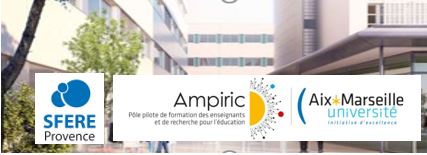RÉSUMÉ
La majorité des applications numériques à visée pédagogique fait appel à la dactylographie. Quelques études ont montré un impact négatif du clavier sur l'apprentissage de l'écriture, mais elles portent sur des apprentissages courts (Longcamp, 2005 ; Kiefer, 2015, Mayer, 2020). Nous réalisons actuellement une étude longitudinale pour comparer l'apprentissage d'une nouvelle langue à la main et au clavier. Pendant une année, nous suivons 2 groupes d'élèves français (11ans) débutant l'apprentissage de l'arabe sur tablette numérique : un groupe écrivant au clavier (n=35), l'autre écrivant avec un stylet (n=39). En début, milieu et fin d'année, nous procédons à des tests de lecture (reconnaissance de caractères, association grapho-phonémique, sens de lecture, traduction de mots) et d'écriture (rappel libre de caractères, copie et dictée de mots). L'année suivante, les élèves reprennent l'apprentissage papier/crayon, mais les tests continuent à être effectués.
Les résultats préliminaires, indiquent globalement un avantage de l'écriture manuscrite. En particulier, les élèves utilisant le clavier sembleraient faire plus de confusions entre les lettres et leur image en miroir. Cependant, nous avons observé certains avantages pédagogiques du clavier, comme l'étape de décomposition du mot en lettres, nécessaire pour le taper mais non pour l'écrire à la main (le mot peut-être simplement ‘dessiné'). Tirer profit de ces deux modes d'écriture pourrait être la clé d'un apprentissage plus efficace.
En conclusion de cette présentation, nous discuterons de l'importance de réaliser des études scientifiques en milieu écologique, des difficultés que l'on peut rencontrer et de comment faire pour les dépasser.
MOTS-CLÉS
Apprentissage, écriture, littératie, arabe, clavier, tablette numérique.
ABSTRACT
Most digital applications for educational purposes involve typing. A few studies have shown a negative impact of the keyboard on learning to write, but they focus on short learning periods (Longcamp, 2005; Kiefer, 2015, Mayer, 2020). We are currently conducting a longitudinal study to compare learning a new language by handwriting and by typewriting. During one year, we are following 2 groups of French students (11 years old) beginning to learn Arabic on a digital tablet: one group is writing with a keyboard (n=35), the other is writing with a stylus (n=39). At the beginning, middle and end of the year, we conduct tests of reading (letter recognition, grapho-phonemic association, reading direction, word translation) and writing (free recall of letters, copying and dictation of words). The following year, all the students resume paper/pencil learning, but the tests continue to be carried out.
Preliminary results indicate an advantage of handwriting. In particular, students using the keyboard seem to make more confusion between the letters and their mirror image. However, we have observed some pedagogical advantages of the keyboard, such as the step of breaking down the word into letters, necessary for typing but not for handwriting (the word can be simply 'drawn'). Taking advantage of these two modes of writing could be the key to an efficient learning.
The presentation concludes with a discussion of the importance of conducting scientific studies in ecological settings, the difficulties that can be encountered and how to overcome them.
KEYWORDS
Learning, writing, literacy, Arabic, keyboard, digital tablet.
REFERENCES
Kiefer, M., Schuler, S., Mayer, C., Trumpp, N. M., Hille, K., & Sachse, S. (2015). Handwriting or Typewriting? The Influence of Penor Keyboard-Based Writing Training on Reading and Writing Performance in Preschool Children. Advances in Cognitive Psychology, 11, 136–146.
Longcamp, M., Zerbato-Poudou, M.-T., & Velay, J.-L. (2005). The influence of writing practice on letter recognition in preschool children: A comparison between handwriting and typing. Acta Psychologica, 119(1), 67–79.
Mayer, C., Wallner, S., Budde-Spengler, N., Braunert, S., Arndt, P. A., & Kiefer, M. (2020). Literacy Training of Kindergarten Children With Pencil, Keyboard or Tablet Stylus: The Influence of the Writing Tool on Reading and Writing Performance at the Letter and Word Level. Frontiers in Psychology, 10.

 PDF version
PDF version
